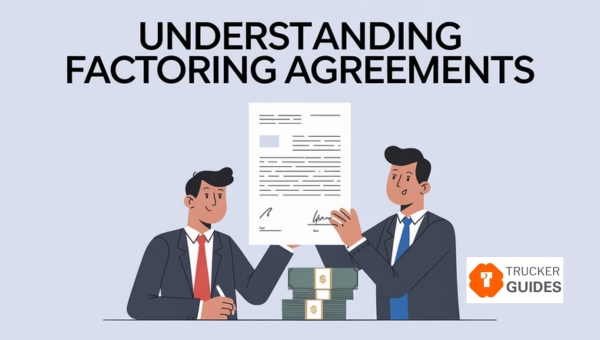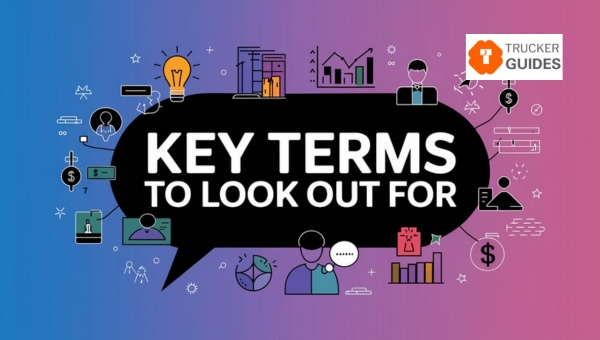Understanding Factoring Agreements [Simplify Cash Flow]


Factoring agreements are financial contracts where a business sells its accounts receivable to a factoring company in exchange for immediate cash. These agreements spell out the rights and responsibilities of both parties.
They cover essential aspects such as fees, advance rates, and terms of service.
Main Points to Note:
When diving into factoring agreements, it’s essential to understand specific key terms that can significantly impact the overall arrangement.

Knowing these terms can help businesses manage their agreements effectively and make informed decisions.
| Feature | Recourse Factoring | Non-Recourse Factoring |
|---|---|---|
| Liability for Non-Payment | The client is responsible for unpaid invoices. | The factoring company assumes the risk of non-payment. |
| Advance Rates | Typically higher advance rates (more upfront cash). | Typically lower advance rates (less upfront cash). |
| Cost | Generally costs less due to lower risk for the factor. | Costs more because the factor takes on more risk. |
| Speed of Approval | Usually faster approval process. | May be slower due to additional requirements. |
| Risk Level | Higher risk for the client; must manage collections. | Lower risk for the client; factor manages collections. |
| Best For | Businesses with reliable customers and lower risk of defaults. | Businesses dealing with higher-risk customers or industries. |
| Credit Requirements | Easier to qualify; less stringent credit checks. | Harder to qualify; stricter credit requirements for customers. |
| Protection Against Defaults | Limited protection; the client must buy back invoices if unpaid. | Offers protection against certain defaults, primarily bankruptcy. |
| Impact on Cash Flow | Can strain cash flow if multiple customers default. | Better for maintaining cash flow during customer defaults. |
Default in factoring agreements occurs when a business fails to meet its obligations, such as not providing accurate invoices or failing to pay required fees. When default happens, the factor may implement various remedies to protect their interests.
These remedies can include penalties, termination of the agreement, or legal actions to recover losses. Factors typically outline specific default events in the agreement, giving them the right to take necessary actions if defaults occur.
Businesses need to be fully aware of these terms to avoid unintentional defaults and the associated consequences, ensuring they maintain a positive relationship with their factoring company.
Termination provisions detail the conditions under which either party can end the factoring agreement. These provisions usually specify the notice period required and any associated termination fees.
Understanding termination provisions is vital as they can impact a business’s cash flow and future financing options. Clear termination terms allow businesses to exit the agreement without facing unexpected penalties, offering flexibility to adapt to changing financial circumstances.
Being aware of these provisions helps businesses plan ahead and avoid sudden financial setbacks that could arise from terminating the agreement prematurely.
Representations and warranties in factoring agreements refer to the assurances made by the business regarding the accuracy of the information provided to the factor.
This includes the legitimacy of invoices, the creditworthiness of clients, and compliance with applicable laws. If any representations are found to be false, the factor may have grounds to terminate the agreement or seek damages.
It’s crucial for businesses to ensure that their representations are accurate and truthful to maintain good standing with the factor and avoid potential legal issues.
Credit protection fees are charged by factors to mitigate the risk associated with factoring agreements. These fees typically cover the cost of credit checks and insurance against client defaults.
While they add to the overall cost of factoring, they provide businesses with an added layer of security. Credit protection fees are essential for businesses to evaluate the total cost of factoring and make informed decisions regarding their financing options.
By knowing these fees upfront, businesses can better plan their finances and avoid unexpected costs that may arise from client defaults.
Also Read: 10 Best Appointment Setting Services [Skyrocket Your Business]
The factoring agreements process can seem challenging at first, but breaking it down into clear steps makes it more manageable.

Here’s a detailed guide to help you understand each stage from application to funding.
Also Read: 10 Best GA4 Alternatives for 2024 [Explore the Top Picks!]
Selling receivables is a vital part of factoring agreements. It allows businesses to turn their outstanding invoices into quick cash.

This process can help businesses manage their cash flow and keep operations running smoothly. Let’s look at two key aspects of this process: assignment schedules and reserves.
Assignment schedules play a crucial role in the sale of receivables. These schedules detail which invoices are being sold to the factoring company and outline the terms associated with each invoice. They are essential for keeping track of which receivables are included in the factoring agreements. This helps ensure that payments are accurate and on time.
For businesses, maintaining clear assignment schedules is vital. It helps manage cash flow effectively and prevents confusion about outstanding invoices.
By having a detailed assignment schedule, businesses can avoid mix-ups and maintain a good relationship with their factor. This clarity is important for a smooth factoring process. Knowing exactly which invoices are factored in helps businesses plan their finances better and stay organized.
Reserves are another important aspect of factoring agreements. A reserve is an amount of money that the factoring company holds back from the total invoice value to cover potential losses or disputes.
This reserve acts as a safety net for the factor, ensuring they have funds available if clients fail to pay. The amount held in reserve is usually a percentage of the total value of the invoices sold. Once the invoices are paid, the factoring company releases the reserved amount to the business.
Understanding how reserves are calculated and managed is important for businesses. It impacts their cash flow and the total amount they receive from factoring. Clear communication about reserve terms helps businesses plan their finances effectively.
Knowing how much will be held in reserve and when it will be released can aid in avoiding unexpected cash flow issues. Managing reserves well ensures that businesses can maintain a healthy financial state while using factoring services.
Intricacies of factoring agreements can seem challenging, but understanding the key terms and fees can make a big difference for your business.
By familiarizing yourself with origination fees, advance rates, and customer limits, you can make more informed decisions that enhance your cash flow. Remember, knowledge is power when it comes to financial management.